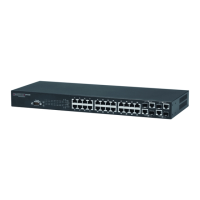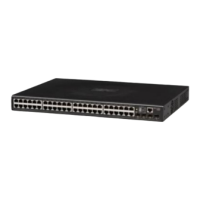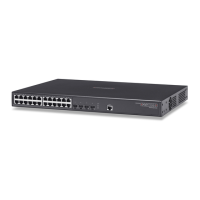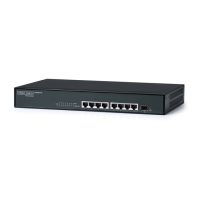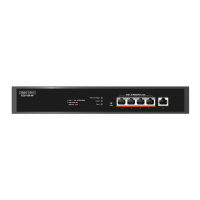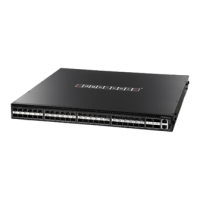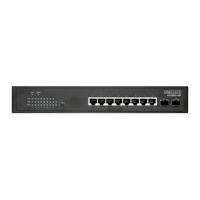C
HAPTER
35
| VLAN Commands
Configuring IEEE 802.1Q Tunneling
– 843 –
switchport dot1q-
tunnel service
match cvid
This command creates a CVLAN to SPVLAN mapping entry. Use the no
form to delete a VLAN mapping entry.
SYNTAX
switchport dot1q-tunnel service svid match cvid cvid
[remove-ctag]
svid - VLAN ID for the outer VLAN tag (Service Provider VID).
(Range: 1-4094, no leading zeroes)
cvid - VLAN ID for the inner VLAN tag (Customer VID).
(Range: 1-4094, no leading zeroes)
remove-ctag - Removes the customer’s VLAN tag.
DEFAULT SETTING
Default mapping uses the PVID of the ingress port on the edge router for
the SPVID.
COMMAND MODE
Interface Configuration (Ethernet, Port Channel)
COMMAND USAGE
◆ The inner VLAN tag of a customer packet entering the edge router of a
service provider’s network is mapped to an outer tag indicating the
service provider VLAN that will carry this traffic across the 802.1Q
tunnel. By default, the outer tag is based on the default VID of the edge
router’s ingress port. This process is performed in a transparent
manner as described under "IEEE 802.1Q Tunneling" on page 191.
◆ When priority bits are found in the inner tag, these are also copied to
the outer tag. This allows the service provider to differentiate service
based on the indicated priority and appropriate methods of queue
management at intermediate nodes across the tunnel.
◆ Rather than relying on standard service paths and priority queuing,
QinQ VLAN mapping can be used to further enhance service by defining
a set of differentiated service pathways to follow across the service
provider’s network for traffic arriving from specified inbound customer
VLANs.
◆ Note that all interfaces are configured as access interfaces by default
(that is, a user-to-network interface). Using the switchport dot1q-
tunnel mode uplink command configures an interface as an uplink
interface (that is, a network-to-network interface).
◆ When the remove-ctag option is specified, the inner-tag containing
the customer’s VID is removed, and the outer-tag containing the
service provider’s VID remains in place.

